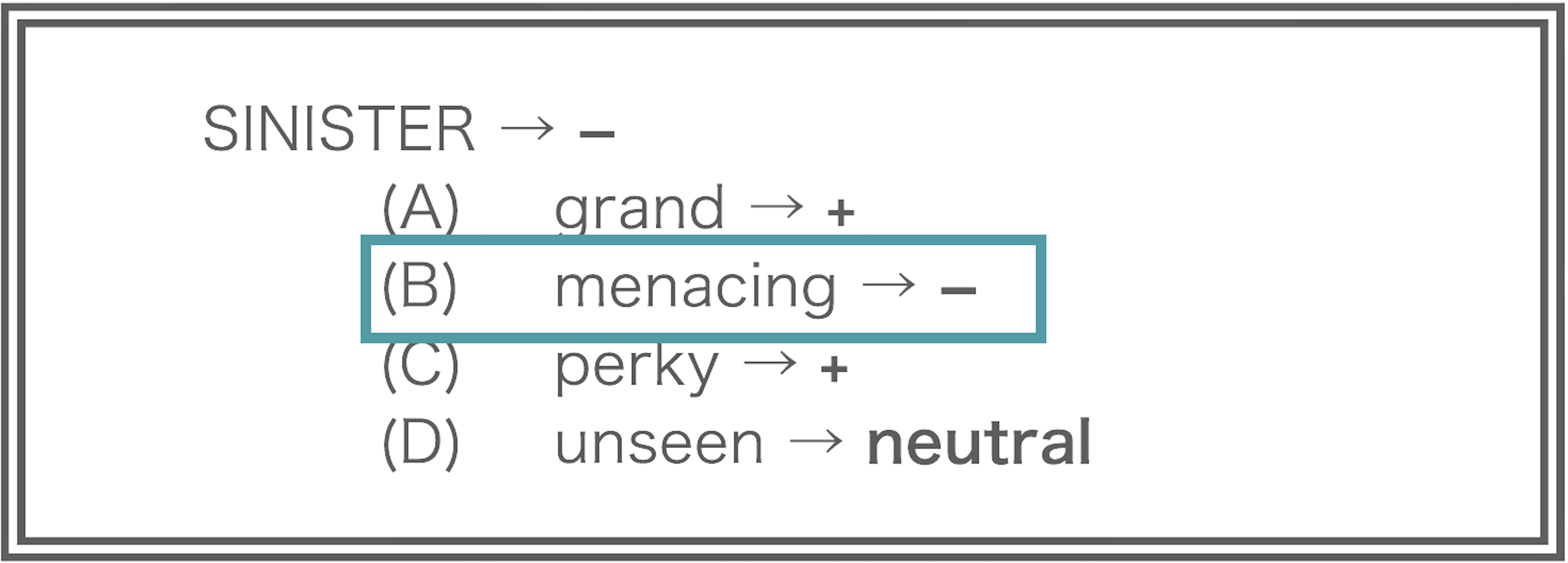Study vocabulary
If you have more than two weeks to prepare for the ISEE, studying vocabulary is a very good idea! The verbal section largely relies on knowledge of words, so the more words you know, the better.
Study vocabulary for 10-15 minutes every day ‒ short, consistent study sessions are the best way to effectively build vocabulary.
You can find good word lists for each ISEE level here: https://quizlet.com/testinnovators/folders
Think of your own answer first
Always think of your own answer before looking at the answer choices. You should use this strategy for both the synonym questions and the sentence completion questions.
Coming up with your own answer first is the best way to avoid tempting wrong answers that are related to the question, but do not have the correct meaning.
Don’t worry about coming up with a perfect word for either synonym questions or sentence completion questions. It’s fine to think of a phrase or feeling that fits. For synonym questions, perhaps you can only think of a context, phrase, or sentence in which youʼve heard the word before. Anything helps!
Find the answer choice that is closest to the word or idea that you predicted.
Break words apart
If you encounter a word that is unfamiliar to you, see if you can break the word apart. Roots contain the core meaning of a word, and prefixes and suffixes supplement that meaning. Do you recognize part of the word? Do you know another word that has that part? If so, use it to help you predict the meaning of the given word, or to eliminate answer choices that are not in line with that meaning.
Hereʼs an example of how to apply this strategy:
Culpable:
- attuned
- famous
- guilty
- soft
Students are given a word and then asked to find its closest synonym in the answer choices. If you don’t immediately know the correct choice, consider if the root is familiar or if you’ve heard it in a specific context before.
Try breaking the word apart:
Culp
-able
Culprit: the person responsible for a crime
Although you may not have known the word culpable, you might know the word culprit. Using that, you can choose the answer choice closest to this meaning, which is C: guilty.
Use word connotation
Connotation is the mood or feeling associated with a word. Sometimes, you might not know what a word means, and you might not recognize parts of it, but you can still figure out if it is a good thing or a bad thing. To use this strategy, assign words a sign: positive, negative, or neutral.
For synonym questions, the sign of the given word should match the sign of the correct answer. For sentence completions, the sign that should go in the blank should match the sign of the correct answer.
Hereʼs an example of how you might apply this strategy to a synonym question:

Hereʼs an example of how you might apply this strategy to a sentence completion:

Underline in sentence completions
As you read each sentence, underline the words that give you clues about what will go in the blank. Words that tell you the type of sentence are helpful, such as “however,” “although,” “because,” or “not.” Also underline words that give you the meaning of the sentence: the critical adjectives and nouns that indicate what the sentence is talking about.
Here’s an example of how to underline the most important words in a sentence completion:

Find direction words and context clues
Direction words either keep the sentence going in the same direction (“so,” “therefore,” “and,” commas, semicolons, etc.) or change the direction of a sentence (“however,” “although,” “while,” “but,” etc.). In addition to direction words, every sentence has context clues that point to what should go in each blank.
For example, if a sentence read, “Taylor was —— from too much homework, lack of sleep, and the loss of their beloved family dog,” then too much homework, lack of sleep, and the loss of their beloved family dog are the context clues that point to what goes in the blank; a prediction like “stressed” is supported by these clues. “Tired” would make sense but the loss of the family pet implies something more upsetting or distressing than just sleepy.
Tip: Cover the answer choices, read the question, predict the answer, compare your prediction with the answer choices, eliminate the worst answers, and pick the answer that best matches your prediction. Check out our Verbal Strategies below for more tips!